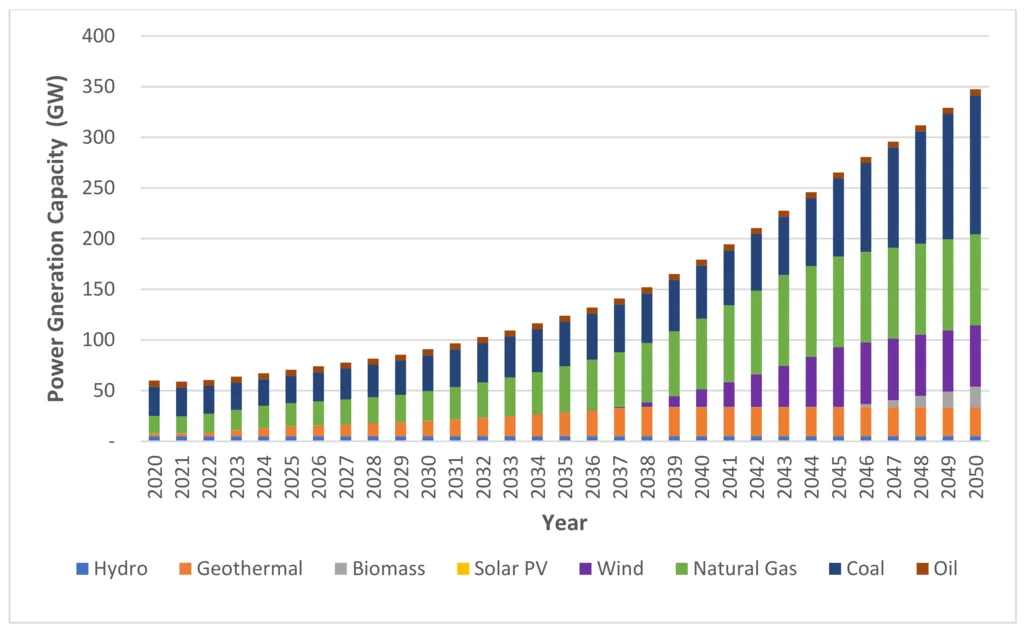Indonesia is pushing forward with one of Southeast Asia’s most ambitious clean energy plans. By 2025, the country expects to generate 63.21 billion kWh from renewable sources, with a steady annual growth rate of 3.09% projected through 2029. The engine behind this progress is a powerful combination of policy support, infrastructure planning, and rising private investment. All of those make up the core of the Indonesia renewable power expansion story. Let's get into it!
Indonesia Renewable Power Expansion: Government Targets and Energy Mix Shifts
Indonesia’s renewable energy share in the national energy mix was around 14% in 2021. The government aims to raise this to 23% by 2025. This target is supported by initiatives under the National Electricity Supply Business Plan (RUPTL) 2021–2030, which outlines a transformation of the energy sector.
RUPTL plans the addition of 69.5 GW of power capacity by 2034, with 76% coming from renewable sources and energy storage. Among the renewables, solar leads the charge with 17.1 GW planned, followed by hydropower (11.7 GW), geothermal (5.2 GW), wind (7.2 GW), and bioenergy (0.9 GW).
To build momentum, the government has already taken practical steps:
-
Over 300,000 solar lights distributed
-
More than 26,000 solar streetlights installed
-
Policies promoting rooftop solar panels across the country
-
The B30 biodiesel mandate, expanding biofuel usage
These measures go beyond symbolic gestures—they lay the groundwork for a genuine transition to a low-carbon economy.
Read Also: The Reality vs Goal of Indonesia Renewable Energy Investments
Solar and Geothermal Lead the Investment Charge in Indonesia Renewable Power Expansion

Indonesia’s renewable strategy hinges on two powerhouses: solar and geothermal. The RUPTL allocates 12.2 GW of new renewable energy capacity between 2025 and 2030, including significant solar and geothermal projects.
These sectors are attracting investor attention. The Institute for Essential Services Reform (IESR) estimates Indonesia needs at least 24 GW of installed renewable capacity by 2025 to meet its target—requiring annual additions of 5–7 GW.
The total investment opportunity is pegged at $182.5 billion (2,967 trillion rupiah) through 2034, with 73% expected to come from private sector partnerships. This presents a major opening for domestic and international investors looking to support clean energy while accessing a high-growth market.
Policy-Driven Market Growth
Indonesia’s policy landscape is one of the strongest drivers of this market expansion. Supportive regulations, clear national targets, and a willingness to engage private capital have built a credible and scalable renewable roadmap.
From rooftop solar incentives to biomass co-firing strategies, these efforts demonstrate the government’s commitment to balancing sustainability with economic resilience. The focus isn’t just on generation—it’s also about building energy storage, smart grids, and transmission networks to handle a cleaner, more complex energy system.
Read Also: Big Changes Ahead Indonesia Infrastructure Development
Indonesia Renewable Power Expansion: Scaling Up for Impact
The Indonesia renewable power expansion is an economic and environmental turning point for many parties. With billions in investment opportunities, a clear policy framework, and a surge in solar and geothermal development, the maritime nation is positioning itself as a clean energy leader in the region. To succeed, acceleration is key. Meeting the 2025 targets requires urgency, coordination, and innovation. But the pieces are in place—and the momentum is real.







